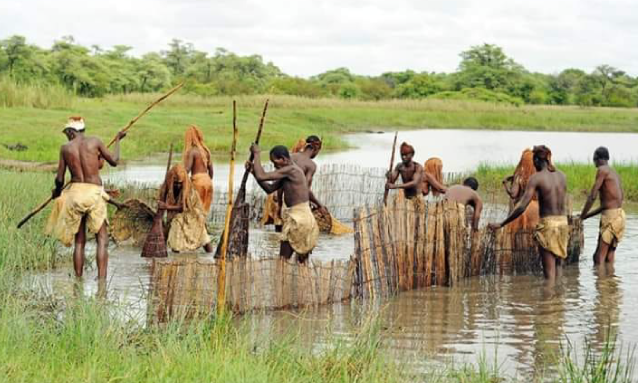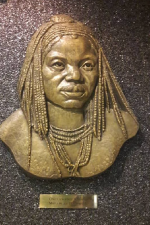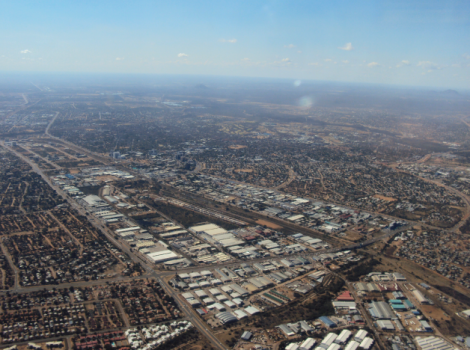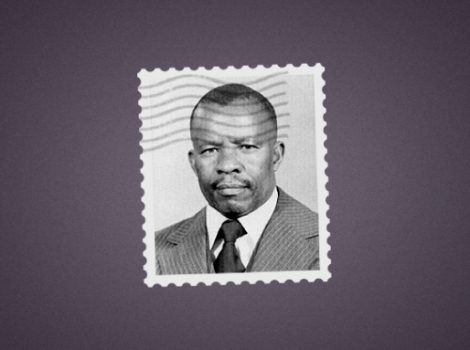
The Culture Botswana 2.0 Facebook page is amazing at educating Batswana and the rest of the world about our people and rich culture. Last week, the team went one further and posted COVID-19 awareness videos in all the minority languages spoken in Botswana. Naturally, the response was very positive and well received.
However, the RuKwangali video that targeted the VaKwangali, drew a reader’s comment; “I never came across this tribe, first time to learn about these people.”
The reader wasn’t the only one as many others don’t know about the VaKwangali and this prompted the Culture 2.0 team to write this article to tell Batswana about this little-known tribe. We are delighted and privileged to share with you all, Culture Botswana’s finding in the team’s own words.
We are most grateful to Bernard Linyungi Sihungu, the MuKwangali featured in our COVID-19 health alert, who also provided the following historical background. Before the 1885 Berlin Conference, which created artificial borders in Sub-Saharan Africa, there were five known kingdoms in the Kavango region straddling Angola, Botswana and Namibia: Kwangali, Mbunza, Shambyu, Gciriku and Mbukushu.

A riverine people, VaKwangali are originally from Central Africa and on following great rivers southwards, turned up in Mashi, an area squeezed between two rivers, Mashi/Cuando and the Zambezi. Around the middle of the 18th century, an Ukwangali queen (or “hompa” in RuKwangali) Mate I, led the tribe about 500 km westwards into an area near Makuzu, 20 km to the northwest of Nkurenkuru, the present-day capital of VaKwangali in Namibia. The reign of her successor, Hompa Nankali, saw tensions with neighbouring tribes. Subsequently, the hompa moved her subjects firstly to Sihangu near Mukukutu, and then farther on to Karayi, near present-day Cuangar, Angola.
According to Sihungu, down the years, successive Kwangali hompas led the tribe through difficult periods like droughts, hostilities from other tribes as well as increasing ill-treatment at the hands of Portuguese settlers in Angola. These factors prompted the VaKwangali to move to areas like Rurova and Mayara before eventually settling at Nkurenkuru under King Mpepo around 1822.
However, peace remained elusive and around 1850, some tribespeople broke away and migrated south-eastwards, following the Kavango River towards the Okavango Delta. This group eventually joined WaYei and HaMbukushu communities who had already settled around the Delta from southwest Zambia and Caprivi. The settlers adopted advanced fishing and hunting methods from the WaYei and over time, established their own prosperous capital near present-day Ngarange.
They called this capital Mangao and the tragedy that would befall it much later would give rise to what has now become an idiomatic RuKwangali lament: “Marunda ga Mangao”, which means “Gone like the old ruins of Mangao.”
The capital’s demise had to do with mounted Batawana troops armed with breech-loading rifles bursting forth from the bush. With their superior weaponry and experience in organised warfare, this Tswana tribe was subjugating all other tribes in what is now known as Ngamiland and holding its own against other aggressors like the Makololo, AmaNdebele and Boer Trekkers.
It was against this backdrop that the VaKwangali fled to Angola in the early 1900s, settling near present-day Luiana village, near the Luiana/Kwando River. However, civil strife erupted in that same area (this was before the Angolan war for independence), causing the VaKwangali to flee back towards Mangao with a HaMbukushu community they had joined in Angola.
This mixed community headed straight to a familiar place. However, before it could reach Mangao ruins, this community was detained near Kauxwi by officers from the Botswana Police Force (renamed Botswana Police Service in 1996) while plans were being made to resettle them as refugees of war. In December 1967, the refugees were finally resettled at ordinarily named Settlement Camps 1 to 13, which after “etsha”, the local Khwe (San) for “pools of water”, they would rename Etsha 1 to 13. Sihungu is from Etsha 13.
The supreme traditional ruler of all Vakwangali in Botswana, Namibia and Angola is Hompa Eugene Siwombe Kudumo whose palace in is Mayara, Namibia.
Culture Botswana 2.0 Facebook page
About Culture Botswana 2.0: A unique nation-building tool, Culture Botswana 2.0 champions cultural diversity, inclusion, equality and visibility through indigenous-culture journalism that documents and dignifies all of Botswana’s indigenous cultures.




Good to know my people are known in Botswana , hope to visit them soon , I want to ask more about our history in relation to other tribes as well as the practices and ornaments of old .